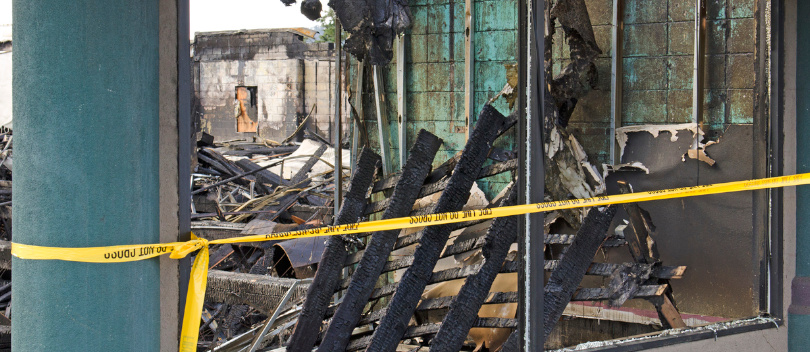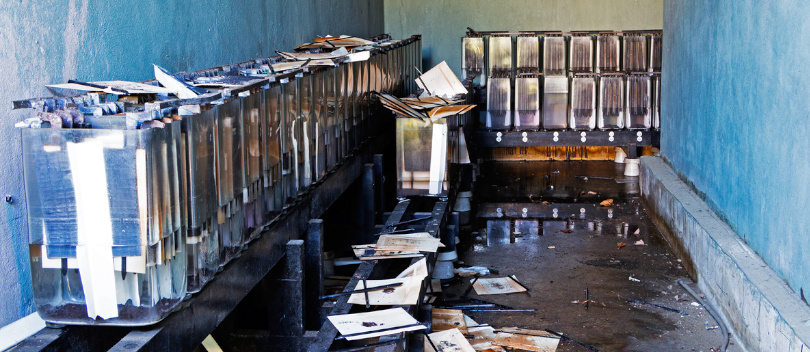Thunderstorms, fires, and floods all pose a serious threat
Discussions concerning data and document safety are often preoccupied with the virtual world; insecure communication channels and pressing cybersecurity threats. But how much thought have you given to the threat posed by natural disasters?
Storms. Floods. Fires. Even hurricanes and earthquakes. Natural events like these can strike at any time, and with little warning. Whether your organisation still relies on paper documents or has transitioned to a digital solution such as Dropbox, Drive, or Email, your data may still be at risk.
In fact, a recent study carried out by Gartner Group found that only 6% of businesses that lost critical data via natural events survived the fallout. 43% went out of business for good. A further 51% went under within two years.
You have policies and procedures in place for keeping staff safe when disaster strikes…
…so why not your data and documents, too?
Important documents? They’re all fuel for the fire

You may be thinking that the way you manage your documents means you’re already prepared for the worst. Well, not exactly. You also wouldn’t be the first to make that assumption. Organisations continue to fall into the trap of thinking that storing files off-site or having digital backups is enough.
Unfortunately, this isn’t an effective way to mitigate against a disaster.
In fact, it’s this approach that puts your documents at increased risk.
Let’s take a look at physical, paper documents as an example. Whether they’re stored on-site or off, a fire or flood can leave documents damaged beyond repair. This could be caused by something as simple as faulty wiring or a burst water pipe.
Did you know?
Digital files and Cloud backups may feel like a safer bet, but that’s largely a false sense of security.
Just because you can’t physically see or hold a file doesn’t mean it isn’t susceptible to damage. Those files are stored on a computer somewhere in the world – whether it’s your internal network or a global provider – so if disaster strikes, those servers and the files contained within could be gone for good.
The Cloud may be simple and easy to use, but even this can come falling down.
You can’t put a price on irreplaceable documents

The financial costs associated with any kind of natural disaster are already high. There’s the damage to physical property, lost productivity, and lost business. While insurance may cover the costs of rebuilding, what dollar value do you place on invaluable documents that…simply can’t be recovered?
The best case scenario you can hope for can still have wide-reaching ramifications. You’ll temporarily lose access to digital files stored in the Cloud as internet connections and IT infrastructure is brought back online. At worst? You’ll irreversibly lose important data, documents, and information.
The chances that you could suffer from one of these events is only increasing. In a post over at Phys.org, the team warn that the rate of natural disasters is only going to increase in the coming years:
“In a warming world, the dangers from natural disasters are changing. In a recent commentary, we identified a number of costly and deadly catastrophes that point to an increase in the risk of “cascading” events – ones that intensify the impacts of natural hazards and turn them into disasters.”
If you’re not properly prepared for these ‘When’ not ‘If’ scenarios?
Your data could quite literally go up in flames, and your business with it.
Disasters happen, but you don’t need to lose your data
We’ve identified that paper documents are susceptible to damage, and digital solutions that harness the power of the Cloud pose their own set of challenges. So where to from here? Early on it became clear to Stellar that organisations need an independant, isolated repository for complete peace of mind.
This repository forms one part of a wider business platform, providing a place for organisations to store, share, and access files without solely relying on the Cloud. Where other software packages require a constant connection, this repository allows files to be accessed even when you’re offline.
This added data redundancy ensures that files are kept in two places at once – while also kept secure – so when disaster strikes, your data isn’t affected. In fact, it’s never been easier to pick up where you left off and keep working while business returns to normal with access anywhere, anytime, on any device.
With this level of support, you can ensure your data makes it through a disaster unscathed.
